Image Archive



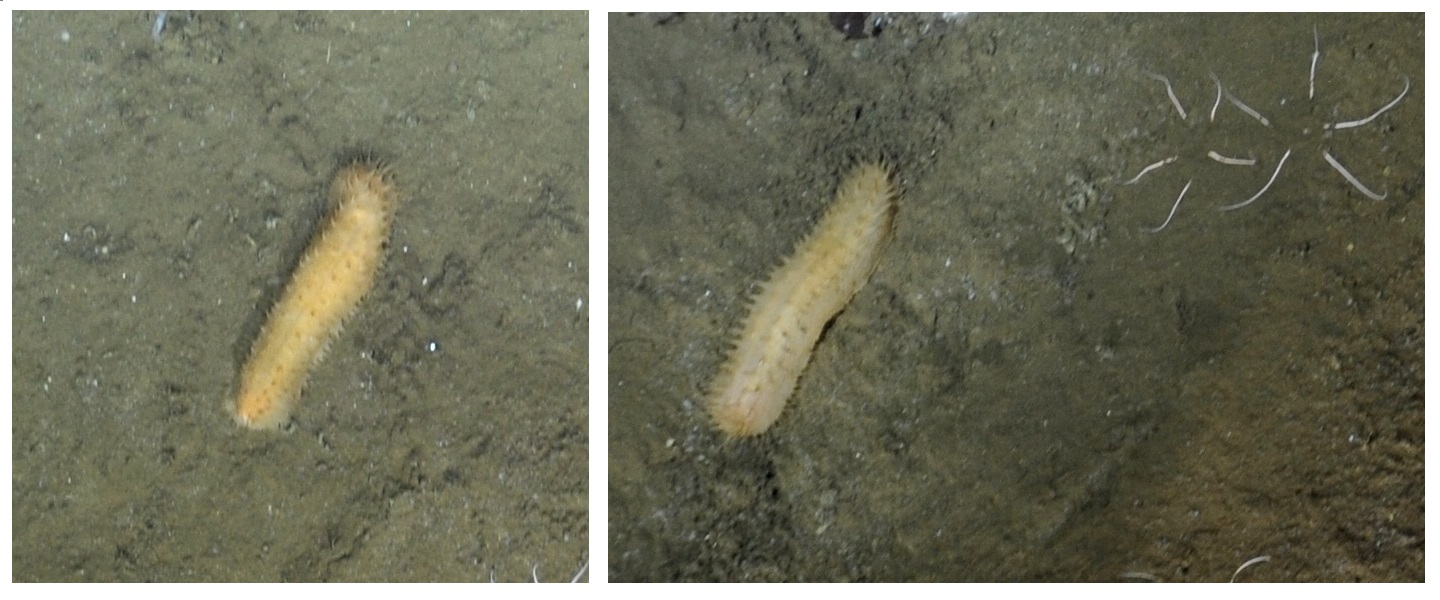

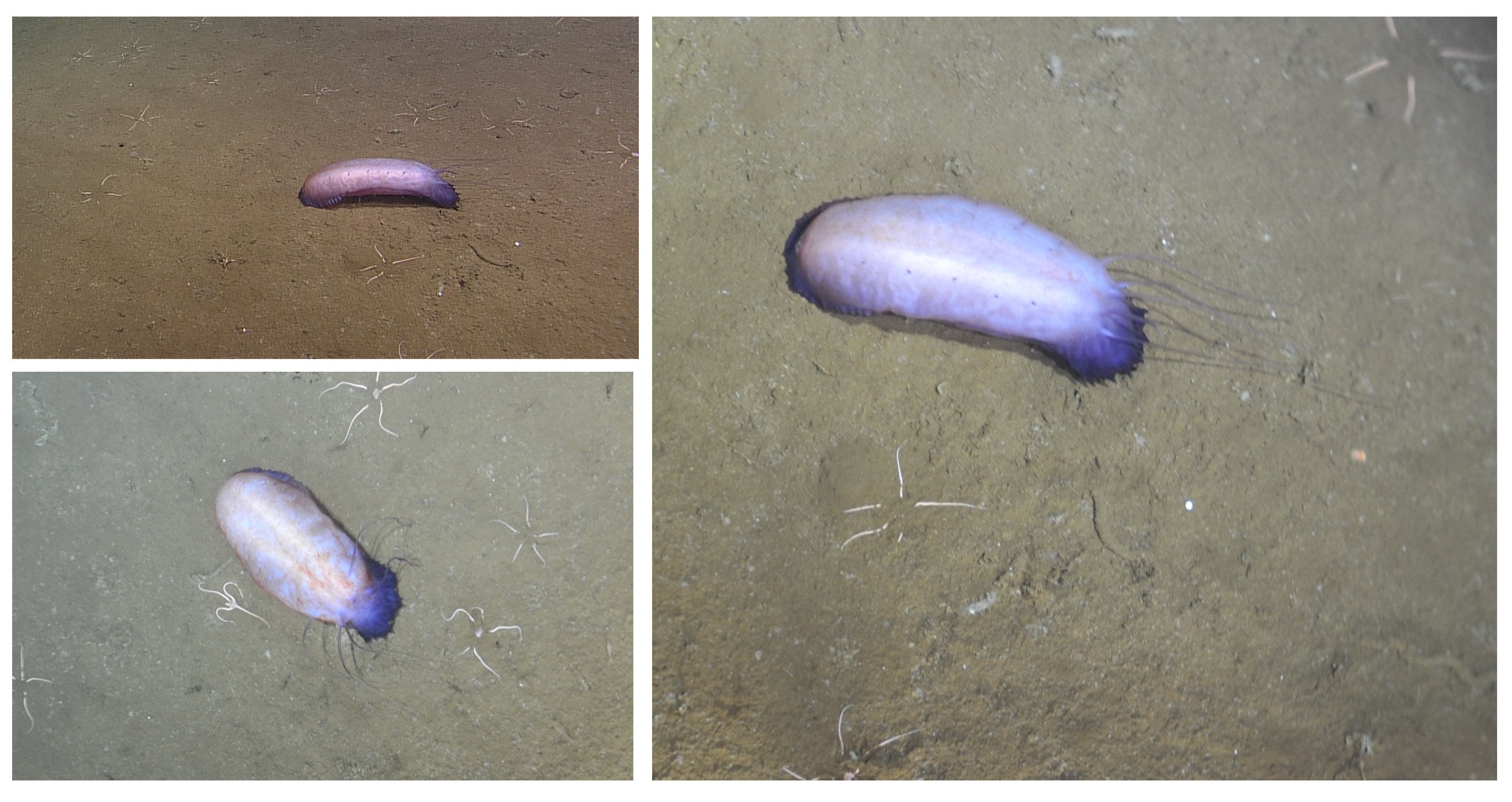




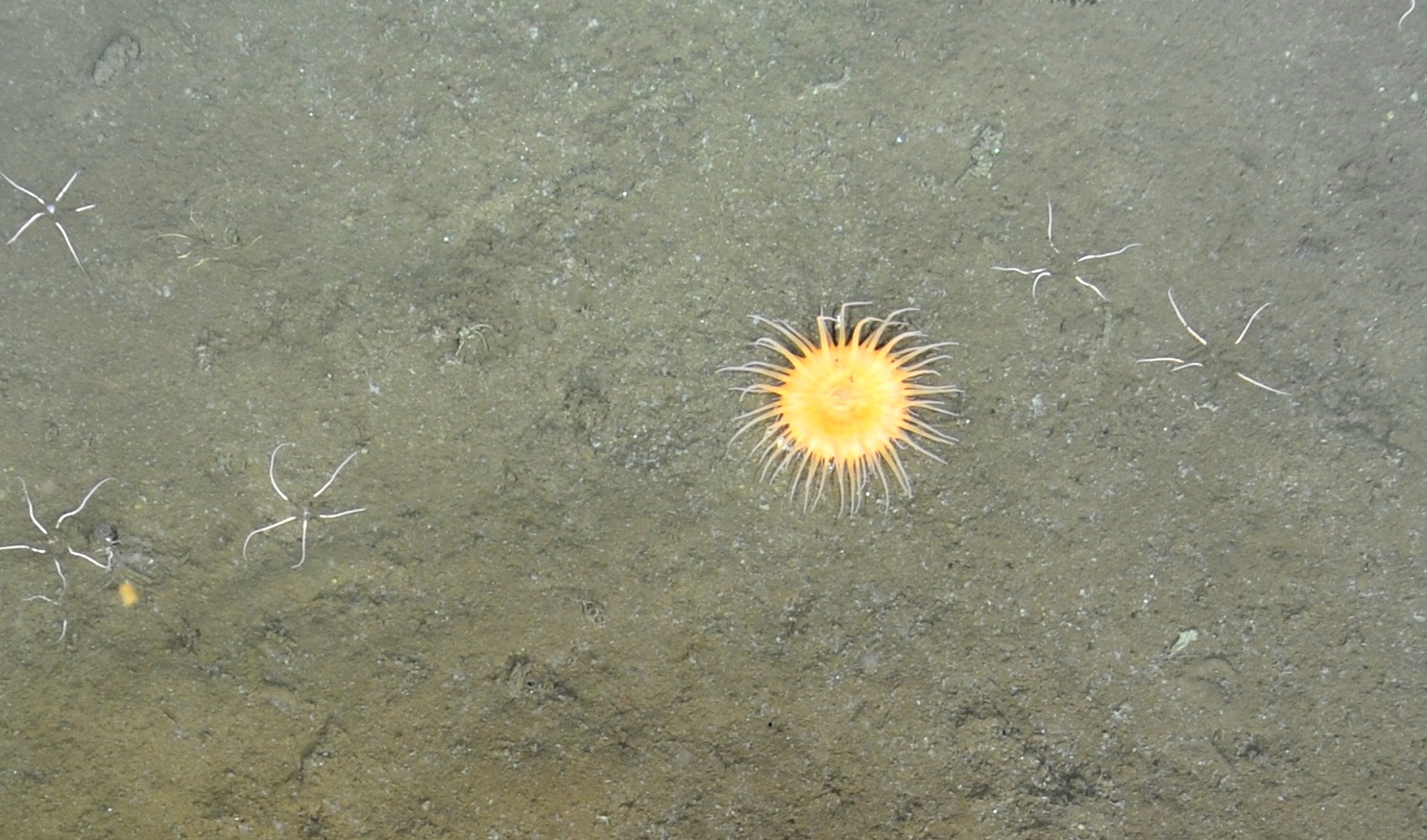

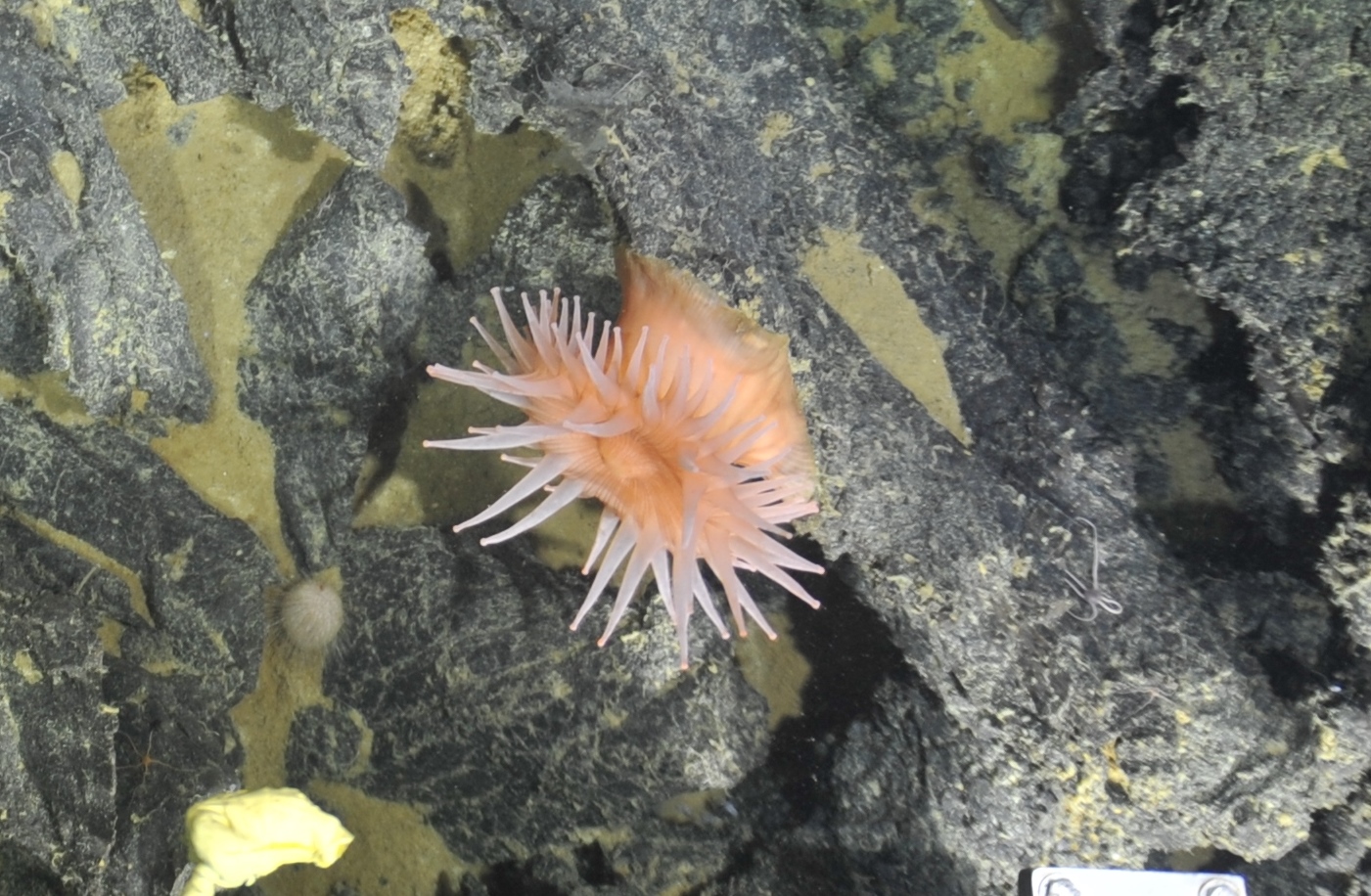



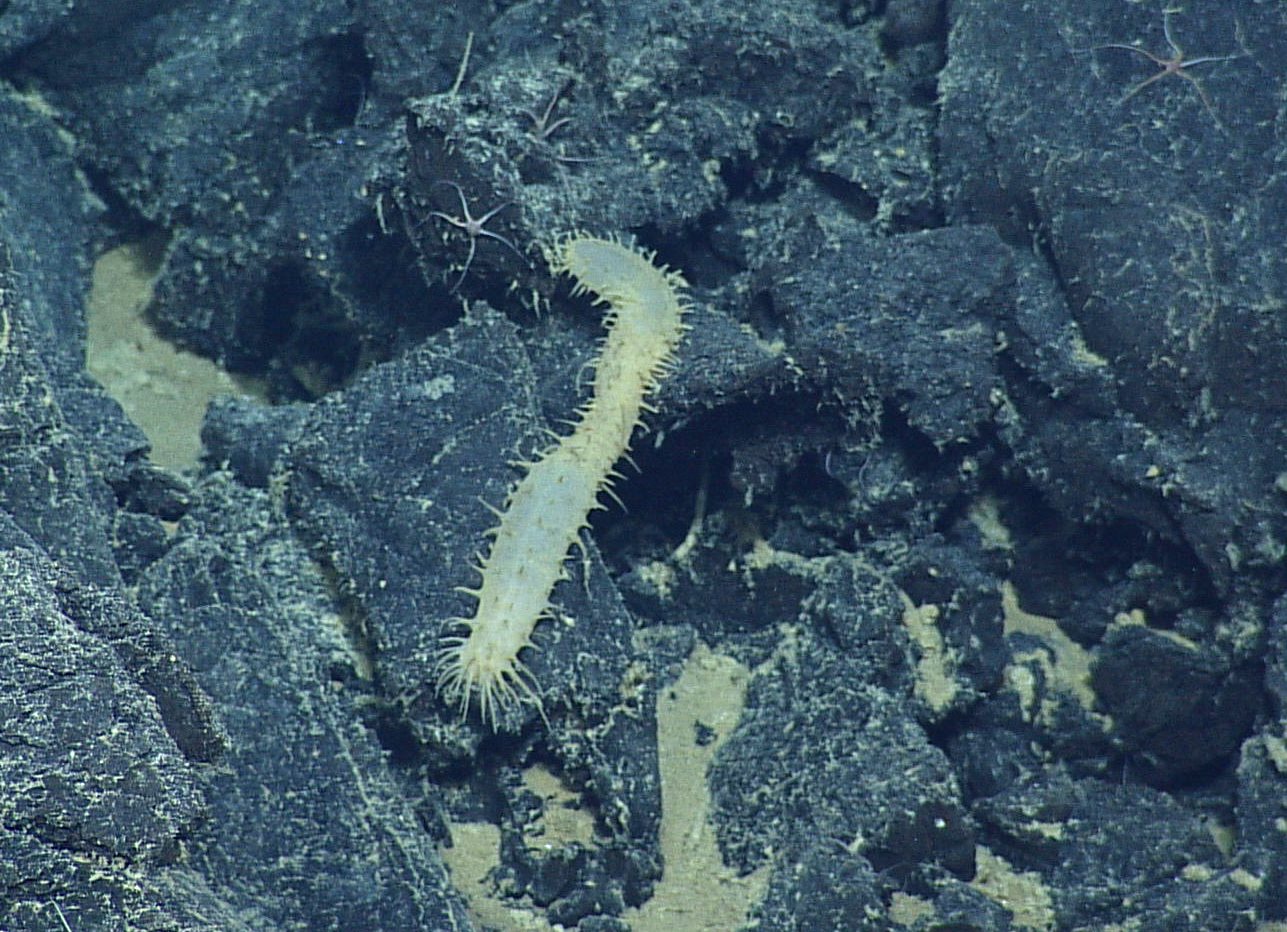
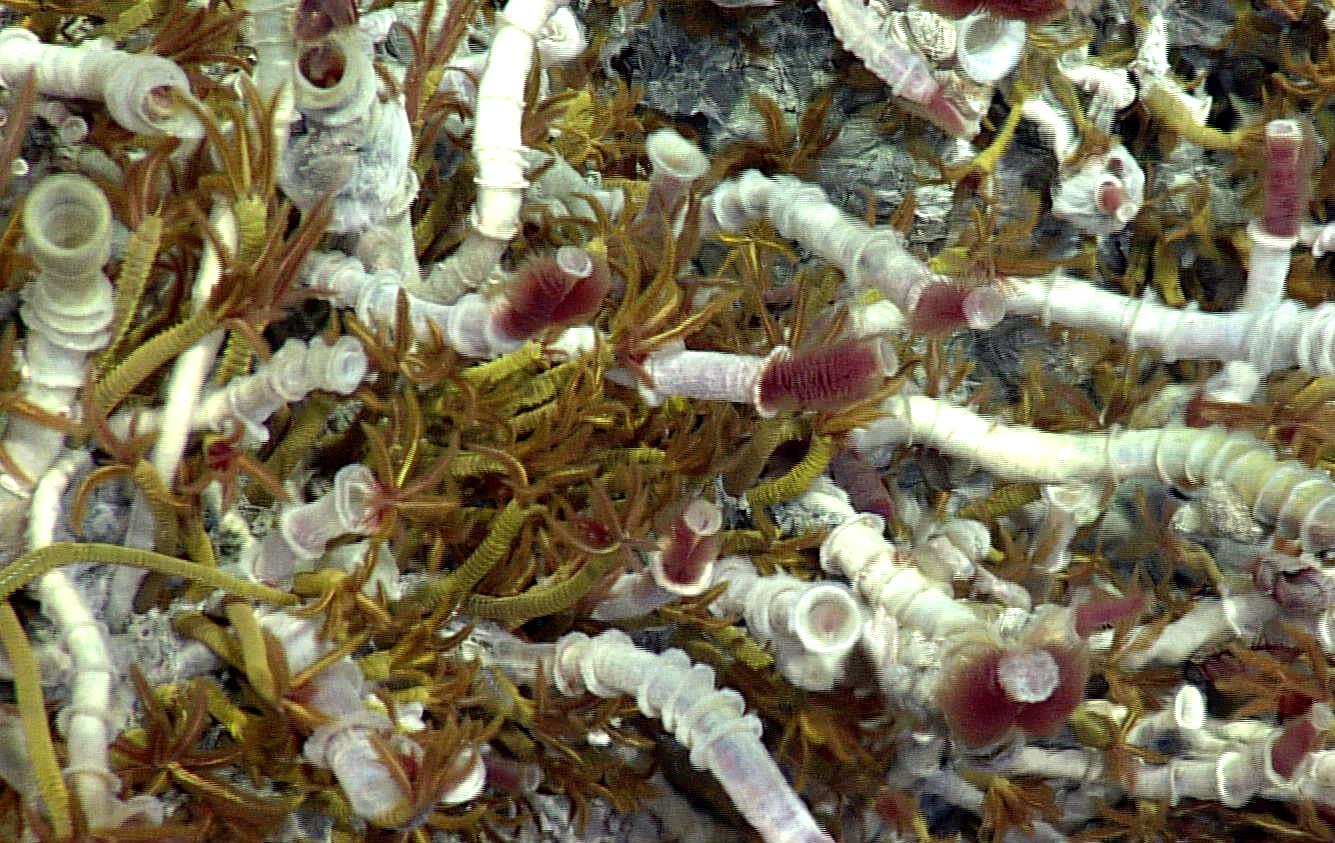
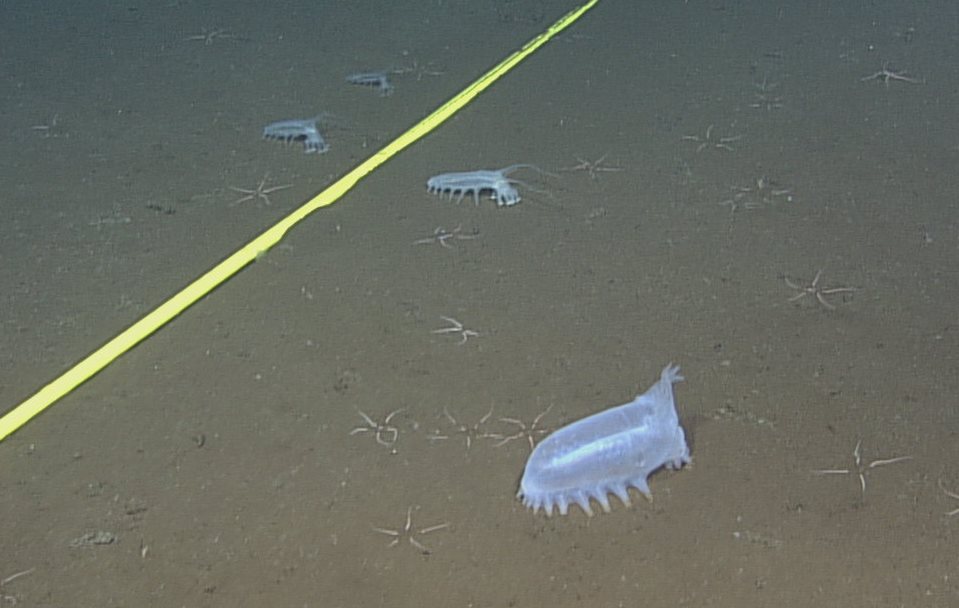



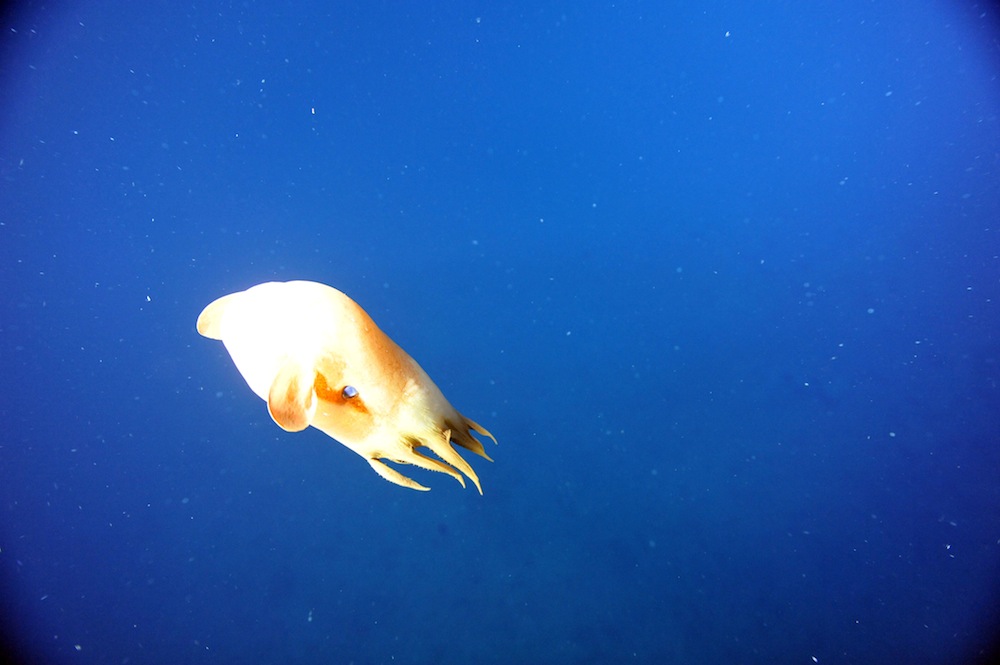

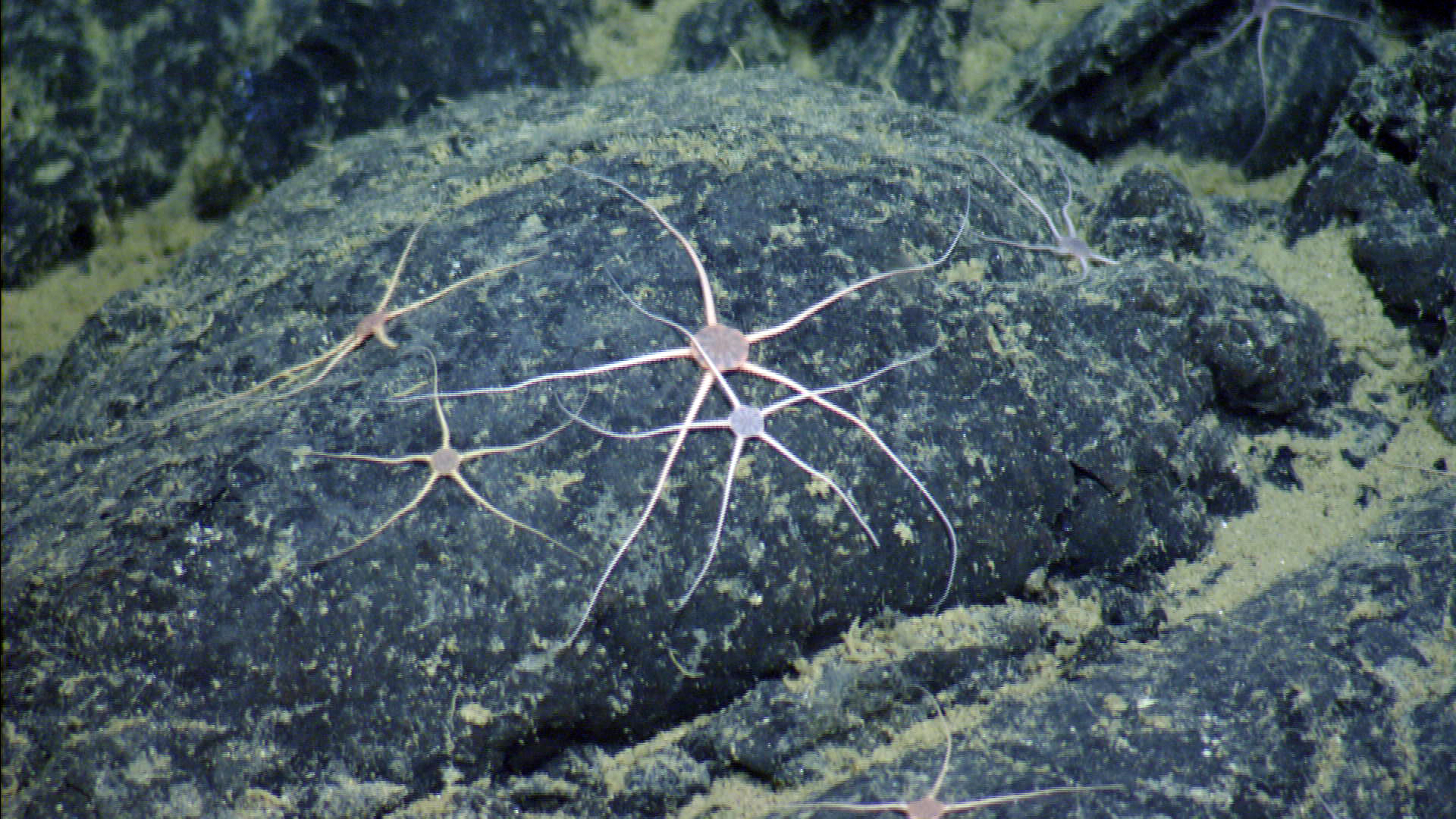




A Rattail checks out the fiber optic cable at Axial Seamount. Credit: UW/NSF-OOI/CSSF; ROPOS Dive R1608; V13.

A Roughtail skate (Bathyraja trachura) resting near a vent on Axial Seamount. Credit: UW/NSF-OOI/CSSF; ROPOS Dive R1617; V13.

This deep sea, purple spiny sea urchin (possibly Tromikosoma panamense) was seen at the base of Axial. Photo credit: NSF-OOI/UW/CSSF; Dive R1715; V14

This unknown sea cucumber was found at the base of Axial Seamount, living among the brittle stars. Photo credit: NSF-OOI/UW/CSSF; Dive R1716; V14

This spiny Holothurian Deep-Sea Cucumber (possibly of Genus Pannychia) has been seen on many regions of Axial Seamount. Photo credit: NSF-OOI/UW/CSSF; V13

This large purple sea cucumber (Holothurian) was seen at the base of Axial Seamount, foraging through the sediments. This one is likely Paelopadites confundens. Photo credit: NSF-OOI/UW/CSSF; V14.

These small sea spiders are Pycnogonids (Phylum Arthropoda) and live among the tube worms and limpets on hydrothermal vents of Axial Seamount. Photo credit: NSF-OOI/UW/WHOI; V11

An interesting perspective of this Dinner Plate Jelly (Solmissus sp.) and the Remotely Operated Cable Laying System (ROCLS) spool, makes the jelly look enormous. Photo credit: Photo credit: NSF-OOI/UW/CSSF; Dive R1604; V13

These dinner plate jellies are a frequent sight during ROPOS dives on Axial Seamount. Photo credit: NSF-OOI/UW/CSSF; Dive R1713; V14

This large jelly is called a Fried Egg Jelly (Phacellophora cantschatica). It normally is a pelagic organism, however this one is on the seafloor, making it vulnerable to spider crab feasting. Photo credit: NSF-OOI/UW/CSSF; Dive R1619; V13

A solitary anemone lives on the sediment seafloor with brittle stars at the base of Axial Seamount. This may be a Jack-o-Lantern Lid anemone. Photo credit: NSF-OOI/UW/CSSF; Dive R1715, V14.

This unknown species of anemone was found on the sediments at the base of Axial Seamount. Photo credit: NSF-OOI/UW/CSSF; Dive R1624; V13

This pink anemone was found at Axial Seamount, affixed to the lava rocks. Photo credit: NSF-OOI/UW/CSSF; Dive R1712; V14

An unknown anemone is attached to the lava rocks at Axial Seamount. Photo credit: NSF-OOI/UW/CSSF; Dive R1608; V13

Two Squat Lobsters on Escargot vent, Axial Seamount. Credit: UW/NSF-OOI/CSSF; V11

A rattail fish (Coryphaenoides acrolepis) is a common site at the summit of Axial Seamount. Credit: UW/NSF-OOI/CSSF; Dive R1720; V14.

A Deep-Sea Cucumber (possibly Pannychia moseleyi) inhabits the lava flows of Axial. Credit: UW/NSF-OOI/CSSF; ROPOS Dive R1721; V14.

Palm Worms (Paralvinella palmiformis) coexist with Ridgeia Tubeworms on hydrothermal vents at Axial Seamount. Credit: UW/NSF-OOI/CSSF; ROPOS, V13.

This large sea cucumber (Holothurian) was seen with many smaller sea cucumbers of Genus Peniagone at the base of Axial. Photo Credit: NSF-OOI/UW/CSSF; Dive R1715; V14.

Beautiful blue ciliates (protists) line the base of the hydrothermal vent called El Gordo. Credit: UW/NSF-OOI/CSSF; ROPOS Dive R1713; V14

A beautiful sea urchin sits on a young lava flow at the summit of Axial Seamount. Photo Credit: NSF-OOI/UW/CSSF; Dive R1712; V14.

A red jellyfish swims 5000 ft beneath the ocean's surface at Axial Seamount on the Juan de Fuca Ridge. Here, most animals swim slowly to conserve energy in the nearly freezing seawater. Photo credit: NSF-OOI/UW/CSSF; Dive R1712; V14.

A Dumbo Octopus spotted during ROV ROPOS dive R1465. Credit: UW/OOI-NSF/CSSF, ROPOS Dive R1465, V13.

A Deep-Sea Cucumber (Holothurian) is shown with brittle stars and a seastar on a lobate flow on Axial Volcano. This is likely the species Pannychia moseleyi. Photo credit: NSF-OOI/UW/CSSF; V13

Brittle stars of the species Spinophiura jolliveti are very abundant on all the lava rocks at Axial Seamount within the caldera. Photo credit: NSF-OOI/UW/CSSF.

A large Fried Egg Jellyfish (Phacellophora cantschatica) hugs the basalts along the floor of Axial Seamount. The jellyfish is likely a 'fried egg' jelly. Credit: UW/NSF-OOI/CSSF; ROPOS Dive R1635, V11.

Deep Sea Skate sketch, drawn by Montgomery Taylor, a College of Charleston undergraduate student who participated on Leg 3 of VISIONS '13.

A small Flapjack octopus sits atop a lobate flow at the summit of Axial Seamount - water depth ~ 1500 m (nearly 5000 feet beneath the surface). Credit: UW/OOI-NSF/CSSF, V13.
- Anemone
- Animal
- Arthropod
- ASHES
- Axial
- Axial Base
- Axial Biology
- Axial Caldera
- Bacteria
- Basalt Lava
- BEP
- Biofouling
- biolgoy
- Biology
- Camds
- Camera
- Camhd
- Central Caldera
- Ciliates
- Cnidaria
- Coastal Biology
- Crab
- Deep Profiler Mooring
- Dive Highlights
- Eastern Caldera
- Echinoderms
- Endurance Array
- Engineering Team
- ENLIGHTEN 10
- Exploratorium
- Fish
- Geology
- HD Camera
- HPIES
- Hydrate Ridge
- Hydrates
- Hydrophone
- Hydrothermal Vents
- Illustration
- Inshore 80 Meters
- Instrument
- International District
- J-BOX
- Jason
- Jellyfish
- Junction Box
- K12
- Lava
- Mollusk
- Moorings
- Nodes
- Nudibranch
- Octopus
- OOI
- Oregon Offshore
- Oregon Offshore 600 m
- Oregon Shelf
- Oregon Slope Base
- People
- PN1B
- PN1D
- Polychaetes
- PPSDN
- Primary Node
- RASFL
- ROCLS
- ROPOS
- ROPOS Dives
- ROV Team
- RV Revelle
- RV Sikuliaq
- RV Thompson
- Salp
- Sample
- SC13
- Science Team
- Sea Cucumber
- Sea Star
- Sea Urchin
- Seafloor
- Seismometer
- Sensors
- Shallow Profiler Mooring
- Shark
- Shipboard
- Shore Station
- Slope Base
- Smoker
- Soft Coral
- Southern Hydrate Ridge
- Sponge
- Squid
- Students
- Students & Guest Participants
- Tmpsf
- Tubeworms
- VISIONS 11 Leg 1
- VISIONS 11 Leg 2
- VISIONS 11 Viewers
- VISIONS 13
- VISIONS 14
- VISIONS 15
- VISIONS 16
- VISIONS 17
- VISIONS 18
- VISIONS 20
- VISIONS 22
- VISIONS 23
- Visualization
